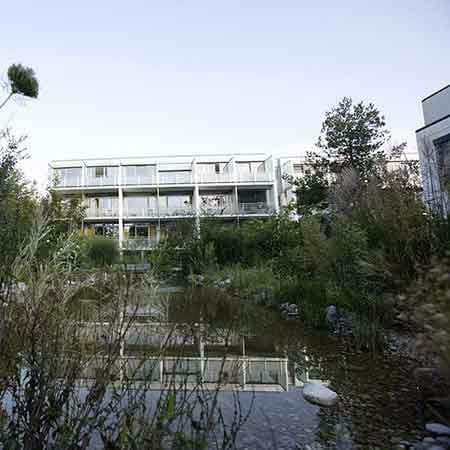Ureteral stricture is a pronounced narrowing of this organ, which results in impaired urine outflow through it into the bladder. In 90% of cases, strictures develop as a result of the development of a malignant tumor. The remaining 10% are ureteral strictures, which are the result of surgery or inflammatory processes. Treatment of ureteral strictures is usually carried out as part of palliative care for patients with inoperable malignant tumors.
Content
- How are ureteral strictures treated?
- Percutaneous nephrostomy
- Ureteral stenting
- Ureteral prosthetic repair
- Nephrovesicular ureteral bypass surgery
- Treatment in Germany with Booking Health
German doctors prefer minimally invasive procedures with excellent long-term results, such as ureteral stenting and endoscopic ureterotomy. If necessary, more invasive interventions are performed, such as the resection with reconstruction of the ureter.
The list of the specialized healthcare facilities includes University Hospital of Ludwig Maximilian University of Munich, University Hospital Ulm, Urology Clinic Munich-Planegg Munich. You can find the full list on the Booking Health website.
Booking Health will take care of all the medical and general arrangements. You will receive the full information about clinics and treatment methods, as well as assistance in issuing a visa, booking flights and accommodation, etc. Booking Health specialists will make an urgent appointment for you, provide you with an interpreter, and answer all your questions.
How are ureteral strictures treated?
When treating ureteral stricture, doctors use methods aimed at dilating the lumen of the organ or reducing the size of the malignant tumor. Improvement can usually be achieved with the help of radiation therapy and chemotherapy.
The most common oncological causes of ureteral strictures are as follows:
- pelvic organ tumors in women account for 50% of all cases;
- colorectal cancer accounts for 23% of all cases;
- prostate cancer accounts for 17% of all cases.
Two-thirds of cases are unilateral strictures, and one-third of patients have both ureters narrowed.
It is often necessary to take measures to normalize urine diversion as soon as possible, because with the prolonged existence of a stricture, kidney function gradually decreases, up to the complete cessation of the organ's functioning. The main options for surgical treatment include:
- percutaneous nephrostomy is the simplest operation but has an obvious disadvantage: urine is not excreted into the bladder, but on the surface of the body and is collected in a receiver;
- bougienage, which is stretching the ureter with the help of metal probes of increasing size;
- ureteral stenting, or transureteral splint, involves the placement of a tube into the organ, which keeps the lumen open;
- endoscopic ureterotomy, which is the incision of the stricture from inside the ureter, under the visual control of a miniature video camera;
- ureteral prosthetic repair, or resection with reconstruction of ureter, involves the removal of the patient's own organ or its part and the implantation of an artificial one instead;
- nephrovesicular ureteral bypass surgery aims to form a bypass for urine outflow into the bladder.
Percutaneous nephrostomy
The essence of the operation is that the ureter simply becomes unnecessary. Urine from the kidney is brought to the surface of the body and collected in a urine receiver.
This is the simplest operation that can be used:
- as a temporary measure prior to ureteral reconstruction surgery;
- in terminal cancer patients with low life expectancy.
Percutaneous nephrostomy can be unilateral or bilateral. In terminal cancer patients, a unilateral nephrostomy is performed even in the case of a stricture of both ureters. A nephrostomy is performed on the kidney, the function of which is preserved to a greater extent.
The procedure is carried out under ultrasound or double (ultrasound and X-ray) guidance. It lasts about 30 minutes. The procedure is well tolerated by patients and does not cause any significant pain. Complications are rare, especially at German hospitals. In some patients, the nephrostomy can be displaced, requiring repositioning.
Ureteral stenting
A stent may be placed inside the ureter. It is dense, so it will not be squeezed by the tumor with external pressure of the tumor on the ureter. The stent is most often inserted through the bladder.
Stenting is a temporary measure. Already 3 months after the placement of a stent, its function is impaired in 40% of patients. In another 30%, the function of the stent is impaired after 4 months, and in 13% after 5 months. It is therefore optimal to change the stent every 3 months, or place it while a patient is waiting for a more effective procedure or surgery to eliminate ureteral stricture.
Ureteral prosthetic repair
Prosthetic repair is performed with nitinol stents. The results of such treatment give better long-term results. Different methods of a surgical approach can be used:
- a retrograde approach, that is, through the bladder, can be used in most patients;
- an antegrade approach, that is, through the skin, can usually be used in patients with an existing nephrostomy.
The use of ureteral prosthetic repair gives a good result for 3-5 years or more. Only 10% of patients have pronounced proliferative processes, as a result of which ureteral strictures recur. The progression of the oncological disease can also be the reason for the deterioration of results.
Nephrovesicular ureteral bypass surgery
The best long-term results can be achieved with nephrovesicular ureteral bypass surgery. The operation involves the formation of a bypass for urine outflow from the kidney. The ureter remains narrowed, but urine no longer passes through it.
During the surgical operation, doctors implant a bypass in the renal pelvis. It passes under the skin, into the suprapubic region, and is excreted into the bladder. To avoid bypass displacement, it is sutured not only to the bladder but also to the subcutaneous tissue. If the bypass is obstructed, it can be replaced with a new one with minimally traumatic techniques.
Modern treatment methods for ureteral stricture can increase a person's life expectancy, relieve some of cancer symptoms, and avoid the development of pyelonephritis and kidney failure.
Treatment in Germany with Booking Health
You are welcome to use the services of the Booking Health company to undergo your treatment of ureteral stricture in Germany. We are the leaders in medical tourism. WIth our service, you can choose the most suitable medical care program and make your treatment appointment at the best price. We offer the following benefits:
- selection of the best clinics in Germany that specialize in the treatment of urinary tract stenosis and achieve excellent results in this medical field;
- reduced cost of ureteral stricture treatment due to the lack of additional fees and coefficients for foreign patients;
- scheduling a treatment appointment on the preferred dates;
- preparation of a treatment program for ureteral stricture, considering the previously performed diagnostic examinations;
- establishing direct communication with an attending physician;
- control of all stages of the treatment program for ureteral stricture;
- invoice control and the return of unspent funds;
- buying and forwarding medicine to your native country;
- organization of additional diagnostics, treatment, or rehabilitation;
- communication with the German hospital after the completion of treatment.
The Booking Health company will provide top-class services. We will book airline tickets and a hotel for you, meet you at the German airport and take you to the medical center. After the completion of the urinary tract stenosis treatment program, we will take care of the organization of your return transfer.
Authors:
The article was edited by medical experts, board-certified doctors Dr. Sergey Pashchenko and Dr. Vadim Zhiliuk. For the treatment of the conditions referred to in the article, you must consult a doctor; the information in the article is not intended for self-medication!
Sources:
Medscape
















